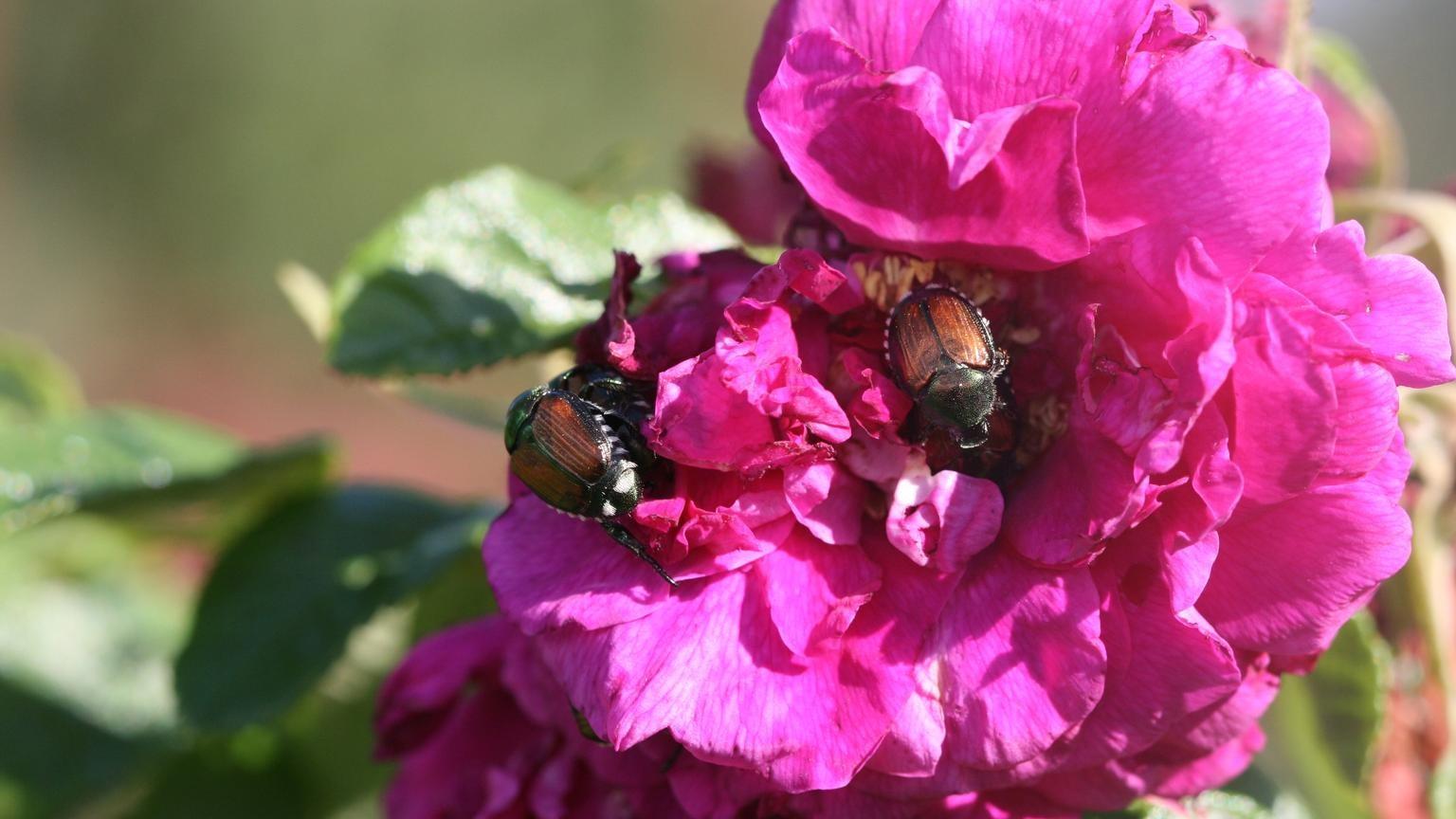Key points
- Japanese beetles are a pest in Maryland on lawns (white grubs), trees, shrubs, and flowers.
- Finding a few grubs in your soil while digging is normal and not a sign of a beetle infestation. Dispose of them in the trash.
- Adult beetles feed on more than 275 species of plants but especially plants in the rose family.
- Grubs (the larvae) feed on the roots of turfgrasses such as Kentucky bluegrass, fine fescues, ryegrasses, or bentgrasses.

Life cycle and habits
- The entire life cycle requires about one year.
- Japanese beetles are metallic green with coppery-brown elytra (hardened front wings) and are about a half-inch long.
- In central Maryland, beetle emergence begins in mid-June and peaks in early July.
- Beetles will remain active for about 4-6 weeks.
- Most of the egg-laying occurs in July and tapers off rapidly by the first week in August.
- Generally, the amount of daily beetle activity will give some indication of grub populations that can be expected later in the summer.
- Most beetles remain close to the emergence area, and adult females lay 40-60 eggs near the adult feeding site.
- Beetle eggs hatch in about 10 days and grubs begin feeding on grassroots.
- Grubs are "C-shaped", creamy colored, with brown heads, 3 pairs of legs, and are about 1 inch long when mature.
- Root loss from grub feeding during August and early September may be so extensive that the turf can be rolled back from the soil like a rug. Grub damage is worse in drought-stressed turf.
- By mid-October, the grubs move down into the soil 6-18 inches and remain inactive until spring.
- In late March or early April, they return to the surface and briefly feed on roots.
- During late May they stop feeding, pupate, and emerge as adults in June.
Managing adult beetles
- Although several species of birds feed on adult beetles, their efforts are insufficient to prevent injury to ornamental plants, and even insecticides will only provide temporary relief when adult populations are heavy.
- Unfortunately, most pesticides remain toxic only for a few days and any new plant growth will not be protected.
- Due to the continuous migration of beetles, 2 or 3 spray applications may be needed to prevent serious injury to plants like roses and grapes. Fortunately, many foliage plants will tolerate moderate defoliation and many will produce new growth and rebloom in mid to later summer after the beetles are gone.
Beetle management options
- Handpick beetles and drop them into soapy water. Or hold the container with soapy water underneath a branch or stem where Japanese beetles are feeding. Gently tap the branch and the beetles will drop into the water.
- Plant non-favored host plants.
- Currently registered insecticides (e.g. commercially available insecticidal soap/pyrethrin blends). Check with local garden centers for available insecticides.
Japanese beetle traps
- Commercially yellow Japanese beetle traps are baited with a feeding attractant and capture large numbers of adults.
- However, randomly spaced, single traps cannot provide effective control. Frequently, a single trap attracts beetles from the entire neighborhood and concentrates the damage in a small area close to the trap site.
- Research has demonstrated a 31-40% increase in adjacent plant damage when traps were used close to susceptible plant species.
- We do not recommend their use.
Adapted from: The Japanese Beetle, Home and Garden Mimeo #HG78, 1992. J.L. Hellman, Extension Entomologist, Department of Entomology, University of Maryland, College Park, MD. 1992. Rev. 2/2011, 5/2020
